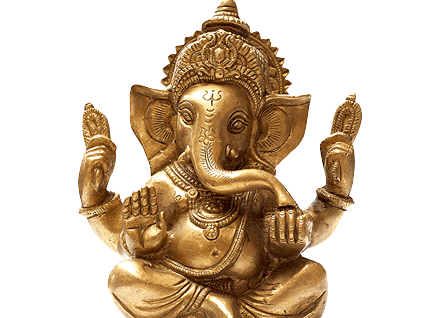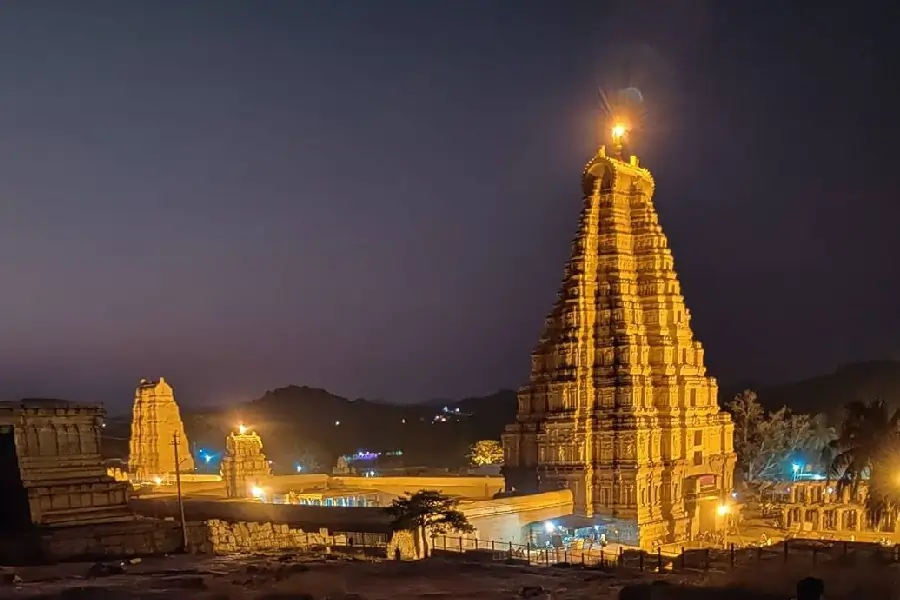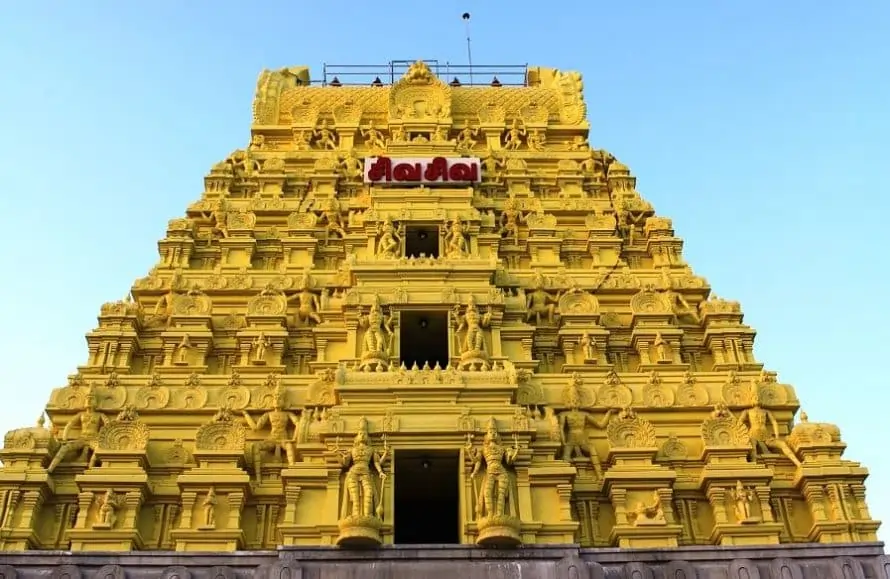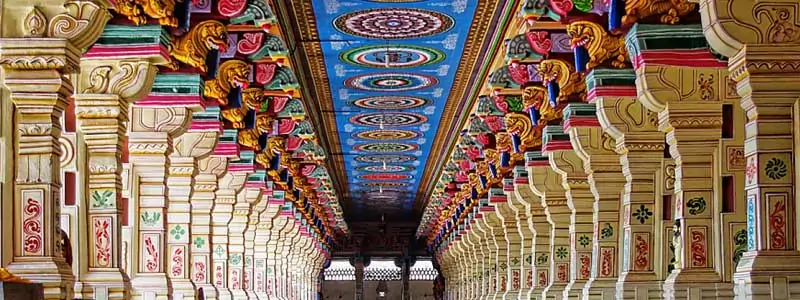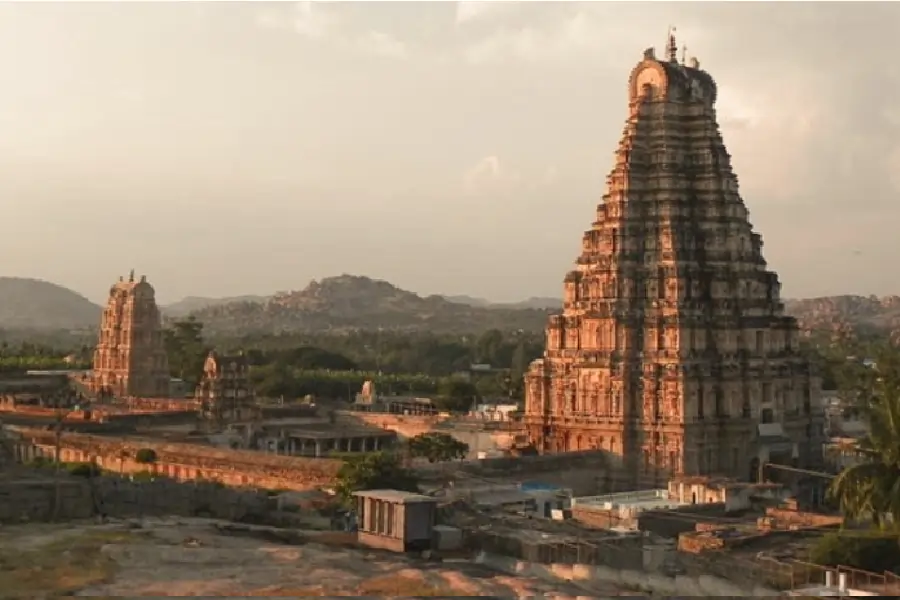
History of Ramanathaswamy Temple, Rameshwaram

Ramanathaswamy Temple, located in the sacred town of Rameshwaram in Tamil Nadu, is one of the most renowned and revered Hindu temples in India. It is a significant pilgrimage site, attracting devotees from all over the country. The temple’s history is deeply rooted in Hindu mythology and is intricately connected to the epic Ramayana.
Mythological Origins of Ramanathaswamy Temple
The mythological origins of the Ramanathaswamy Temple are deeply rooted in the epic Ramayana, an ancient Hindu scripture that narrates the extraordinary life of Lord Rama. The temple’s history is intricately connected to the divine journey of Lord Rama, his wife Goddess Sita, and his loyal brother Lakshmana.
According to the Ramayana, Lord Rama, the seventh avatar of Lord Vishnu, was exiled from his kingdom of Ayodhya for fourteen years. During their exile, Goddess Sita was abducted by the demon king Ravana and taken to his kingdom in Lanka. Determined to rescue his beloved wife, Lord Rama embarked on a perilous journey to Lanka with the help of an army of Vanara (monkeys) led by the mighty Hanuman.
As Lord Rama and his army reached the shores of Rameshwaram, they faced a seemingly insurmountable obstacle—the vast expanse of the ocean. Lord Rama, being an incarnation of Lord Vishnu, possessed divine powers. He aimed his divine weapon towards the sea, commanding it to make way for his army. However, the sea god Varuna did not oblige, prompting Lord Rama to perform an intense penance seeking forgiveness for his act.
During this penance, Lord Rama realized that he needed the assistance of Lord Shiva, the supreme deity of destruction and transformation. He received divine guidance from the revered sage Rishi Agastya, who instructed him to worship Lord Shiva and seek his blessings. Following the sage’s instructions, Lord Rama built a lingam (symbol of Lord Shiva) out of the sand and performed elaborate rituals to propitiate Lord Shiva.
Pleased with Lord Rama’s devotion and penance, Lord Shiva appeared before him and granted him his blessings. Lord Rama then installed the lingam, known as the Ramanathaswamy Lingam, in Rameshwaram as a token of his reverence and gratitude. This lingam became the presiding deity of the Ramanathaswamy Temple, a sacred abode that holds immense significance for devotees seeking blessings and spiritual solace.
The construction of the original Rameshwaram Temple is believed to have been initiated by Lord Rama himself. As per ancient texts, Lord Rama instructed the Vanaras army to bring stones from various places to build the bridge to Lanka. As the Vanara were searching for stones, they came across a small squirrel who offered to help by rolling in the sand and shaking off the grains onto the bridge. Lord Rama, touched by the squirrel’s devotion and dedication, blessed it, leaving its imprint on the stones. This legend highlights the importance of even the tiniest act of devotion in the eyes of the divine.
The mythical origins of the Ramanathaswamy Temple intertwined with the epic tale of Lord Rama and his quest to rescue Goddess Sita. Sita have imbued the temple with a profound sense of sacredness and devotion. The temple stands as a testament to the enduring power of faith and serves as a spiritual haven for millions of devotees who seek solace, redemption, and a connection with the divine.
Construction and Architecture of Rameshwaram Temple
The construction of the original Rameshwaram Temple is attributed to Lord Rama himself. Over the centuries, the temple has undergone several renovations and expansions under different rulers and dynasties. The Pandya kings initiated the construction of the temple, and later, the Chola and Vijayanagara rulers contributed to its development. The temple showcases the splendid Dravidian style of architecture, characterized by intricate carvings, magnificent gopurams, and spacious corridors. The main sanctum houses the lingam believed to have been installed by Lord Rama.
The Longest Corridor
One of the standout features of the Ramanathaswamy Temple is its remarkable corridor, known as the “prakaram.” It holds the distinction of being the longest temple corridor in the world, stretching over 1,200 meters. The corridor is adorned with beautifully carved pillars, intricate sculptures depicting mythological scenes, and small shrines dedicated to various deities. Devotees undertake the practice of “pradakshina,” the act of circumambulating the corridor, as an act of devotion and seek blessings from the deities enshrined along the path.
Sacred Rituals and Pilgrimage of Rameshwaram Temple
The Rameshwaram Temple is renowned for its rich tradition of sacred rituals and religious ceremonies. The temple priests perform elaborate daily worship, including multiple poojas, Abhishekams, and Aartis. Devotees participate in these rituals, offering prayers and seeking blessings. The temple is also known for its association with ancestral rituals. Many pilgrims visit the temple to perform rituals dedicated to their ancestors, seeking their blessings and liberation of their souls. The temple’s sacred water tanks, such as Agni Theertham, are considered holy, and devotees believe that taking a dip in these tanks can cleanse them of sins and bring them closer to salvation.
Learn More:- The Guide to Experiencing Ramanathaswamy Temple
Legends and Miracles
The Ramanathaswamy Temple is steeped in legends and miracles, further enhancing its sanctity and significance. The story of the Ram Setu or Adam’s Bridge, believed to be the remnants of the bridge built by Lord Rama, continues to captivate visitors. The floating stones, which can still be seen in the waters, are considered miraculous and are seen as a testament to the divine nature of Lord Rama’s actions. Additionally, there are legends of miraculous healings and divine interventions associated with the temple, making it a place of faith and miracles.
Cultural and Spiritual Significance of Ramanathaswamy, Rameshwaram Temple
The immense cultural and spiritual significance of Ramanathaswamy Temple, not just for the devotees but for the entire Hindu community. It is considered one of the holiest pilgrimage sites in India and holds a special place in the hearts of millions of devotees. The temple is mentioned in ancient Hindu scriptures and religious texts, further solidifying its importance. Festivals such as Maha Shivaratri and Navaratri are celebrated with great fervour, attracting devotees in large numbers. The temple’s grand processions, elaborate rituals, and vibrant celebrations add to its cultural and spiritual aura.
Preservation and Restoration
Over the centuries, the Ramanathaswamy Temple has experienced various renovations and restoration efforts to preserve its architectural grandeur and religious sanctity. The Archaeological Survey of India (ASI) has played a vital role in protecting and safeguarding the temple’s heritage. They have undertaken meticulous restoration projects, ensuring that the temple remains a glorious symbol of the region’s rich cultural and architectural history.
Symbol of Unity
Ramanathaswamy Temple stands as a symbol of religious harmony and unity. It welcomes devotees from diverse faiths and backgrounds, promoting a sense of inclusivity and universal brotherhood. The temple serves as a unifying force, bringing people together in devotion and respect, irrespective of their differences. It showcases the essence of India’s spiritual fabric, where diverse beliefs coexist harmoniously.
Conclusion
The Ramanathaswamy Temple, with its deep mythological roots, architectural splendour, and rich religious traditions, continues to be a beacon of spirituality and devotion. Its historical significance, coupled with the awe-inspiring rituals and cultural festivities, make it a must-visit destination for pilgrims and tourists alike. Standing in the sanctum sanctorum of the temple, surrounded by centuries of faith and tradition, one can’t help but be overwhelmed by the spiritual connection between humanity and the divine. The Ramanathaswamy Temple is a testament to the enduring power of devotion and the profound impact of ancient legends on contemporary religious practices.
Must Read:
11 Famous Must-See Temples in Rameshwaram
Unveiling Intriguing Facts about Ramanathaswamy Temple

